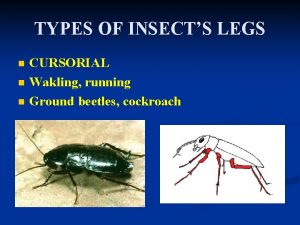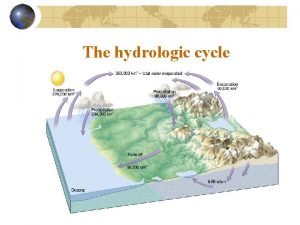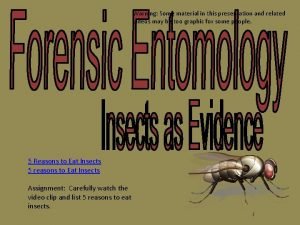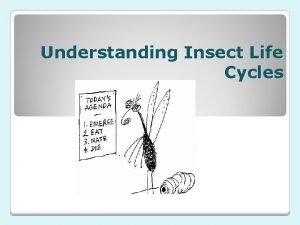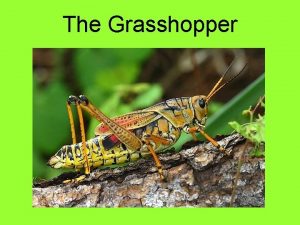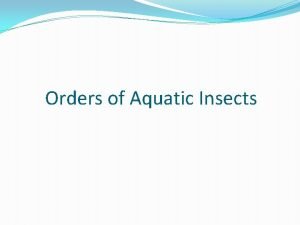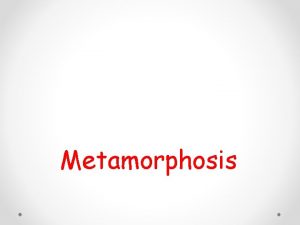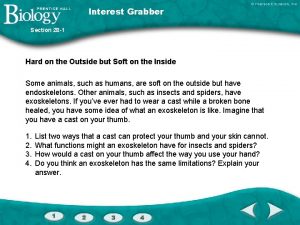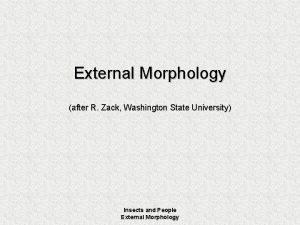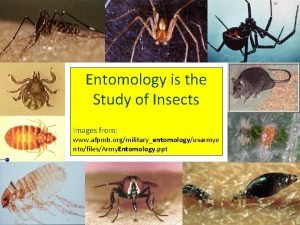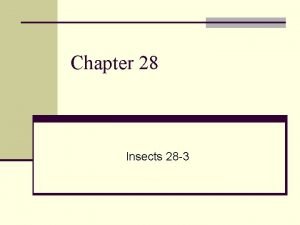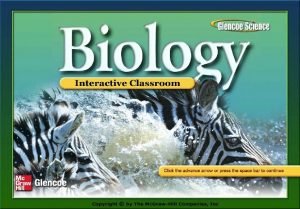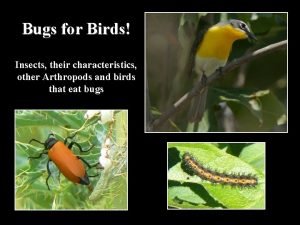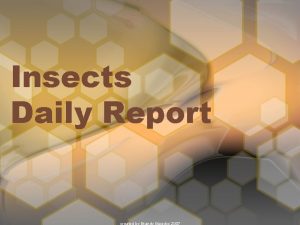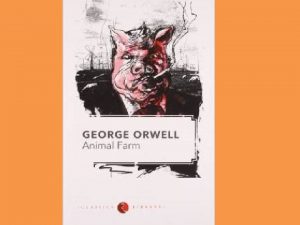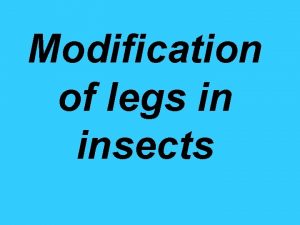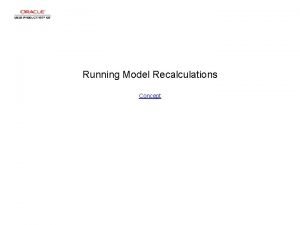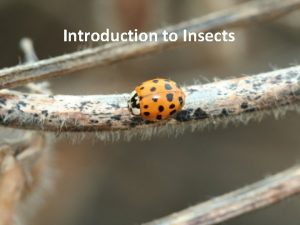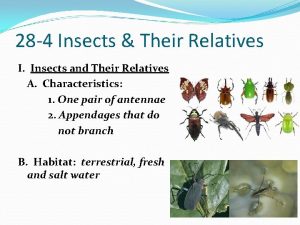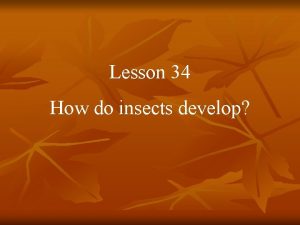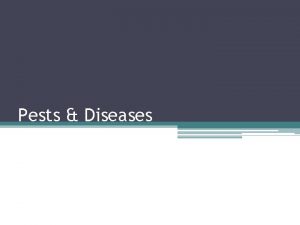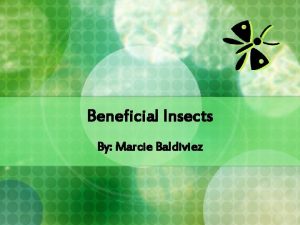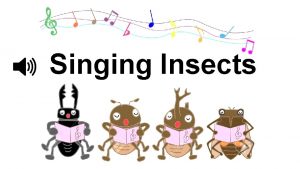TYPES OF INSECTS LEGS CURSORIAL n Wakling running

















- Slides: 17

TYPES OF INSECT’S LEGS CURSORIAL n Wakling, running n Ground beetles, cockroach n

FOSSORIAL n Front leg, digging soil n Mole cricket n

RAPTATORIAL n Fore leg, adapted for catching prey n Praying mantis n

SALTATORIAL n Hind leg, jumping n Enlarge femur n grasshoppers n

NATATORIAL n For swimmng n With hairs n Water beetles n

POLLEN COLLECTING n tibia adaptation (corbicula) n Pollen basket n

KAKI BERPELEKAP (pg 26) n Tarsus of fore leg n With structure that can grasp n To hold on female beetle during mating n

INSECTS LARVAE (refer practical book page 37) CAMPODEIFORM n elongated, flattened, active n Neuroptera n

CARABIFORM (pg 29) n flattened, well-developed legs n with no filaments on the end of the abdomen. n Carabidae (beetle) n

SCARABAEIFORM n sluggish, cylindrical, c-shaped n well-developed head and thoracic legs n Scarabaeidae (beetle) n

ELATERIFORM n Wireworm n elongate, cylindrical, with a hard exoskeleton and tiny legs n Elateridae (click beetle) n

ERUCIFORM n Catterpillar-like n Cylindrical, obvious head, short antennae n Butterflies and moths n

PLATYFORM n Very flattened larva n Leg hidden or none n Diptera (flies), Lepidoptera, Coleoptera (beetle) n

VERMIFORM n Maggot (berengga) n legless, head undevelop n Diptera (flies) n

INSECTS PUPAE (PG 38) EXARATE (EKSARAT) n the appendages, legs etc. , are free and capable of movement n Most orders except butterflies (lepidoptera) & flies (Diptera) n

OBTECT (OBTEK) n the legs and other appendages are closely appressed to the rest of the body n not capable of free movement n butterflies n

COARCTATE (KOARKTAT) n Enclosed within the last larval skin n acts as a cocoon protects the pupa n flies (Diptera, of the sub-order Cyclorrhapha. ). n
 Carabiform
Carabiform Running running running
Running running running Running running running
Running running running Types of running water
Types of running water Crime solving insects lab answer key
Crime solving insects lab answer key Insect cycle of life
Insect cycle of life Grasshopper segmented body
Grasshopper segmented body Maylfies
Maylfies Mandibles and maxillae
Mandibles and maxillae What is metamorphosis? *
What is metamorphosis? * Section 28-4 echinoderms
Section 28-4 echinoderms Are insects in the animalia kingdom
Are insects in the animalia kingdom Ocelli in insects
Ocelli in insects Crime solving insects lab answer key
Crime solving insects lab answer key Dichotomous key pine trees
Dichotomous key pine trees Section 28-3 insects
Section 28-3 insects General characteristics of arthropods
General characteristics of arthropods Characteristics of an insect
Characteristics of an insect
